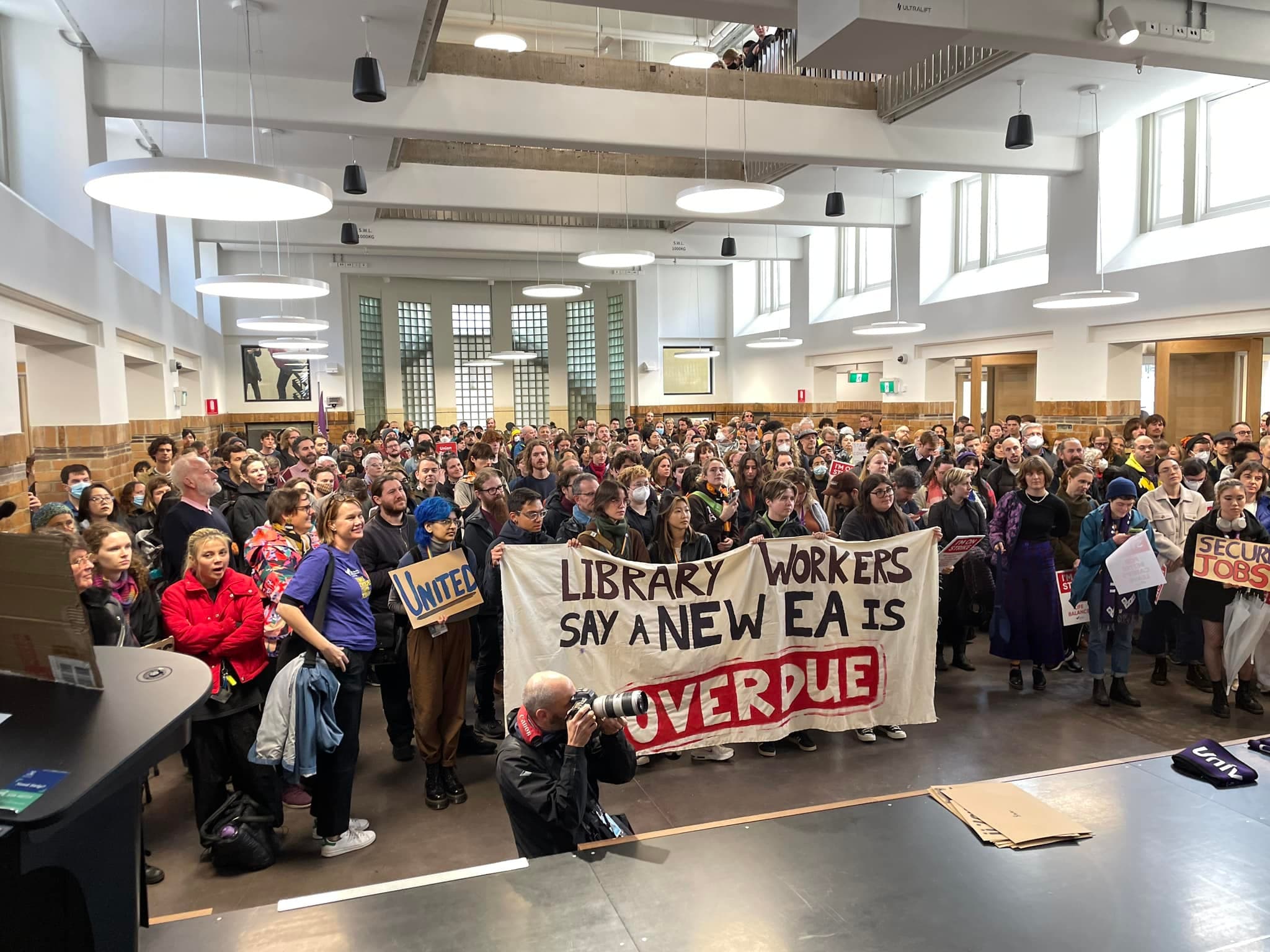UniMelb staff start campaign with a strike

Around 1,000 staff and supporters rallied at the University of Melbourne on 3 May in one of the largest strikes on any Australian university campus in many years.
The four-hour stoppage was the first mass mobilisation in what is shaping up to be a serious battle between the National Tertiary Education Union and University of Melbourne management.
More than 500 staff walked off the job, joining with students and supporters to march to Victorian Trades Hall for a cross-campus mass meeting.
Many work areas came out in greater numbers than in the last round of industrial action in 2018. There was palpable anger among striking staff. Popular chants included, “Casual work is not okay, UniMelb it’s time to pay!”
It’s easy to see why workers are angry: staff at the university have endured a constant wave of attacks over the past few years. But through mass meetings, workers have now developed an ambitious list of demands to push back against management and improve their working conditions.
Among the most important demands is an above-inflation pay increase of CPI plus 1.5 percent. University workers, like workers across the country, have taken a big hit to real wages over the past two years. In 2020, management attempted to reverse a 2.2 percent pay rise, which would have stolen a week’s wages from the university’s 12,000 employees. Later, the university posted a $178 million surplus. So pay is front and centre as an issue.
Workers are also fighting for a mass conversion of casuals into secure employment, demanding that no less than 80 percent of staff be employed on continuing contracts. Currently, over half of the workforce are kept on casual or short-term contracts—a staggering rate beaten only by the accommodation and food services industry. Many staff have worked for the university for more than five years, yet remain in insecure work with no means to plan for their futures and are afraid to speak up because of the risk of not being rehired for the next semester.
Staff have also developed a simple yet popular twelve-word clause that is sure ruffling some feathers in the vice-chancellor’s office: “That there be no forced redundancies for the life of the agreement”.
There are few Australian universities that have as ruthlessly attacked their workforce as the University of Melbourne has over the past decade. Several major restructures have resulted in mass sackings, including the infamous 2014 Business Improvement Program that cut the jobs of 540 staff—at the time, the largest firing on an Australian campus. The university then sacked hundreds of workers in 2020 under the cover of the pandemic. Now staff are demanding some basic dignity: three years without any more sackings.
Buried under the demands is a battle for the heart of the university. Melbourne holds billions of dollars in assets and investments, and consistently rakes in yearly profits of hundreds of millions of dollars from exploiting staff and students. Vice-Chancellor Duncan Maskell is the highest paid university boss in Australia, “earning” $1.5 million a year. For staff, he has become a symbol of everything wrong with the university, delivering messages from his Parkville mansion (which the university pays for) on the need for everyone to make sacrifices.
Now there’s a fight brewing. Whose priorities will win out? The lives of staff and education of students, or the profits of the university bosses?
“The staff at the university are the ones that make the university run. We’re the ones that provide students with education, so we deserve to be treated with dignity and respect”, a mathematics tutor said after the rally.
Particularly encouraging has been a fresh wave of rank-and-file organising, with networks of delegates and union activists expanding across some faculties. The basis for this was built through years of patient organising, particularly the casual workers’ campaign to expose the university’s systemic wage theft totalling more than $45 million. Activists are taking inspiration and lessons from the recent strikes by workers at the University of Sydney and the massive strike at the University of California.
There is understanding among staff that winning their demands will require further, more disruptive, industrial action. The mass meeting of strikers on Wednesday voted unanimously to endorse a motion calling to “seriously consider escalating our industrial action” including “the possibility of an open-ended strike in June”.